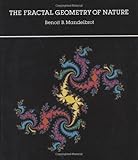The (Mis) Behavior of Markets: A Fractal View of Financial Turbulence
Product Information
Mathematical superstar and inventor of fractal geometry, Benoit Mandelbrot, has spent the past forty years studying the underlying mathematics of space and natural patterns. What many of his followers don't realize is that he has also been watching patterns of market change. In The (Mis)Behavior of Markets, Mandelbrot joins with science journalist and former Wall Street Journal editor Richard L. Hudson to reveal what a fractal view of the world of finance looks like. The result is a revolutionary reevaluation of the standard tools and models of modern financial theory. Markets, we learn, are far riskier than we have wanted to believe. From the gyrations of IBM's stock price and the Dow, to cotton trading, and the dollar-Euro exchange rate--Mandelbrot shows that the world of finance can be understood in more accurate, and volatile, terms than the tired theories of yesteryear. The ability to simplify the complex has made Mandelbrot one of the century's most influential mathematicians. With The (Mis)Behavior of Markets, he puts the tools of higher mathematics into the hands of every person involved with markets, from financial analysts to economists to 401(k) holders. Markets will never be seen as "safe bets" again.
Author : Richard L. HudsonBenoit B. Mandelbrot
Label : Basic Books
Manufacturer : Basic Books
Studio : Basic Books
















Product Reviews
Notices